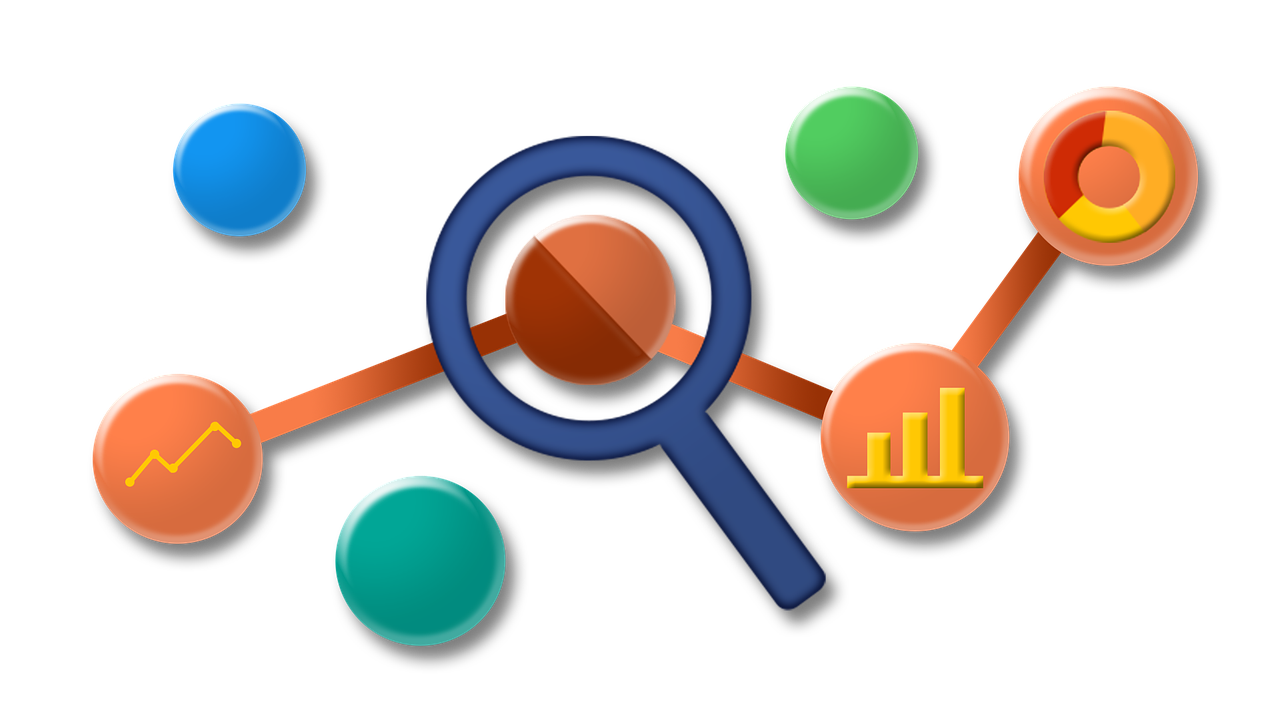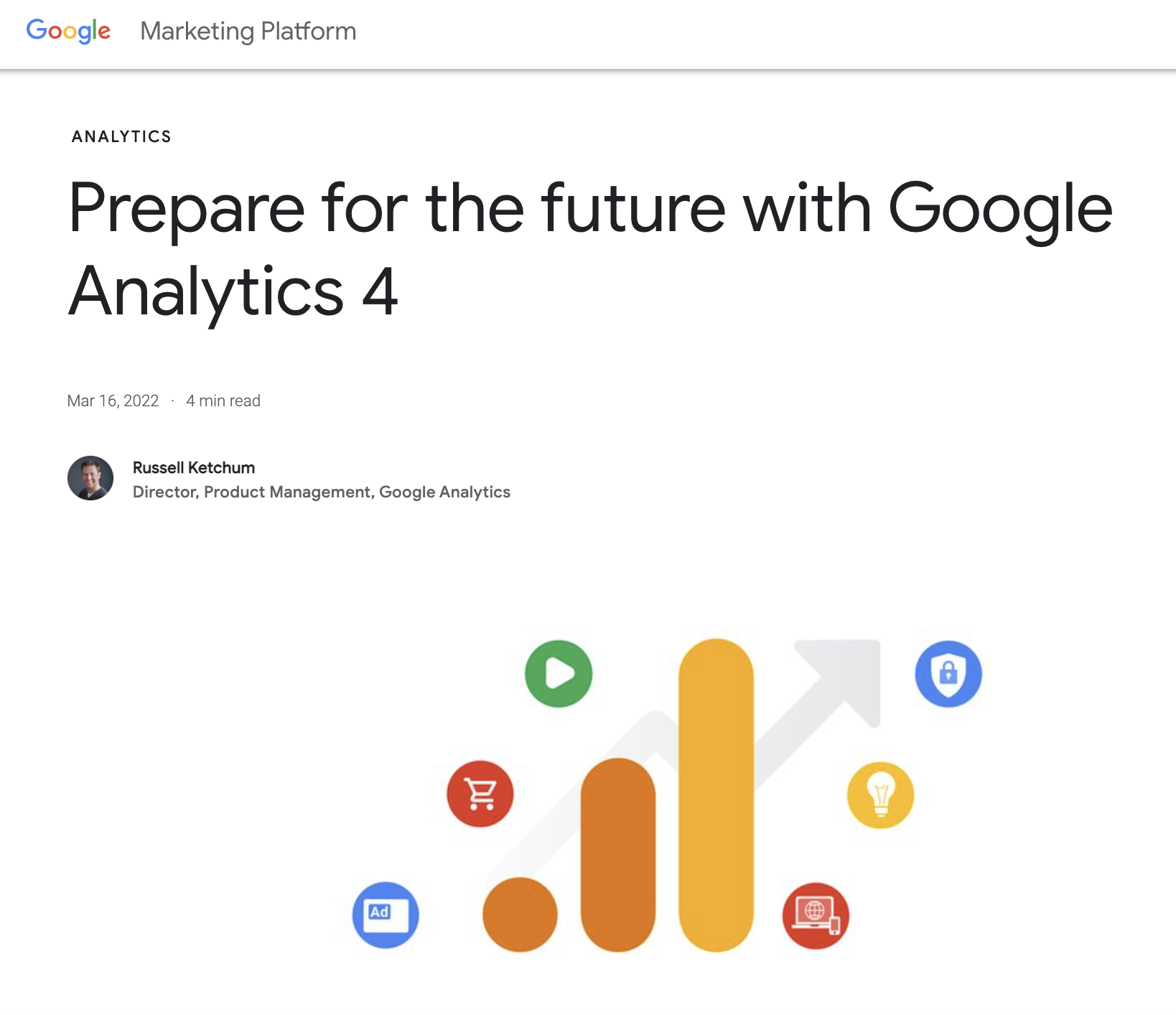In July this year, Universal Analytics (UA)—or Google Analytics 3—will stop measuring website data.
Instead, those wanting to capture intel on audience journeys will need to switch to Google’s next-generation measurement tool, Google Analytics 4 (GA4).
Unlike UA, which is based on sessions and pageviews, the GA4 model draws on customized parameters referred to as ‘events’.
It’s a radically different reporting interface that is more streamlined and offers cross-device measurement.
With no major update to Google Analytics since its inception in 2005, the shift is long overdue— and vital for an app-forward, privacy-centric, and cookieless future.
In this all-you-need-to-know guide, we look at the key differences between the two platforms and detail how and when to migrate to GA4.
Google's Moving on from Universal Analytics blog article
The difference between Universal Analytics and Google Analytics 4
It would be quicker to sum up the similarities, really, since the differences between Universal Analytics and its successor are significant.
GA4, launched in October 2020, is an entirely different reporting system. It’s a more robust way of measuring and will enable website and app marketers to better understand their customer journeys.
While GA4 offers standardized reports, it has more functionality for customized measurement and insights.
You can drill down more effectively on manually defined ‘event’ data, which constitutes a fundamental difference between the new tool and its predecessor.
You can set your own events-based measurements in a user-friendly way, which may be transformative for digital marketing teams.
Many reports we’re used to running in UA cannot be duplicated. But there are still similarities in measurements in areas like pageviews and purchases.
Here are some of the other key differences:
- Users: UA uses two user metrics—total users and new users. Its successor, GA4, uses three: total users, active users, and new users.
- Session counts: The difference in measurement will vary depending on factors like time zones. For example, unlike UA, a new session won’t be created if a customer is on a page when the clock strikes midnight. So, session counts are likely to be lower.
- IP addresses: These are automatically anonymized, unlike in UA, where you have to manually select this function to comply with GDPR.
- App reporting: GA4 allows you to track cross-platform and device data, alleviating the need to measure app and website stats separately.
- Reporting views: UA has up to 25 reporting views, but in the streamlined GA4, there’s only one. You can implement ‘audience’ and ‘data’ streams to use in place of these.
- Bounce rate: GA4 focuses on engagement rates over bounces. In UA, any journey in which a user leaves a site without clicking through elsewhere is considered a bounce.
But in GA4, any session less than 10 seconds long will count as a bounce. Anything more, or a session that involves one or more conversions or two page views, is an engaged session. It’s a more effective and meaningful means of measurement. - Data retention: UA stores data for long periods, but GA4 will only retain it for two or 14 months (depending on the option you choose). The loss of this historic data can be counteracted by integrating GA4 with BigQuery. Direct integrations like this with other platforms are a huge positive.
When do I need to switch to GA4?
Ideally, you will have already done this. But, if you haven’t, you should start migrating to GA4 soon.
UA will stop processing data on July 1, but the sooner you move to GA4, the more data you’ll have.
Doing it now also means you can analyze stats over (nearly) a whole calendar year.
As we’ve mentioned above, linking your GA4 account to BigQuery straight away will also ensure your historic data is collected and stored.
But switching now doesn’t mean you have to cancel UA.
They’re completely different tools, so you can run the two side-by-side as you ease yourself into this new way of capturing and processing analytics data.

Migrating and setting up GA4
As it’s an entirely different system, you can set up and get to grips with GA4 while still retaining your UA account.
There are three ways to get started:
- Set up analytics for the first time
- Add GA4 to a site already connected to UA
- Incorporate GA in your Content Management System
Once you’ve set it up, you’ll then need to set up data streams within the platform and tag the measurement codes on your website to begin harvesting intel.
The setup assistant is going to be your best friend if you’re completely new to GA4.
It will guide you through recommended features and settings and help you to quickly access and import compatible conversions from UA.
Preparation like updating and optimizing your website’s data layer and Google Tag Manager will speed up the process, and make the insights gathered through GA4 more meaningful.
You’ll also need to define the parameters you want to measure. Everything—from page views to conversions—is classed as events in GA4. This means it’s important to consider a diverse range of events to maximize the potential of reporting opportunities.
And the cost?
As with UA, it’s free for websites with less than 10 million users a month. Beyond that, or if you want access to premium features, there’s a paid version.
Key Takeaway
The transition to GA4 potentially requires a learning curve but one that will reap big rewards.
The potential to measure so many more intricacies in customer data and fill the gaps created by disabled cookies and iOS updates is game-changing.
Have you migrated over to GA4? Share your experience with us on social media or in the comments below.
 |
 |
 |
|---|

:format()//media/Google-Analytics-4-for-universities-and-colleges-RQ.png)
